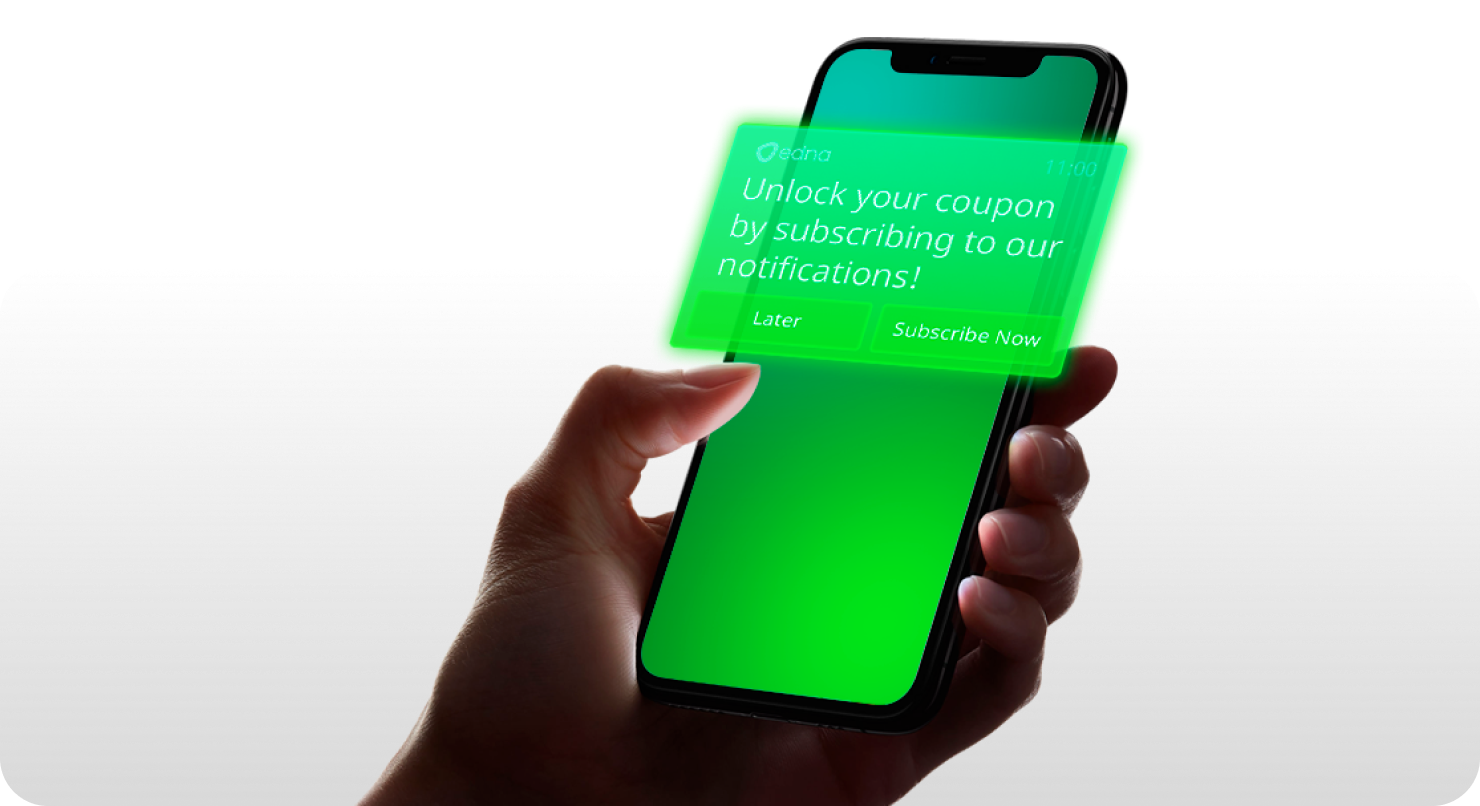6 Best Practices to Boost Your Push Notifications’ Opt-in Rate

The mobile push notification service is one of the most promising ways for businesses to increase app adoption, customer engagement, and in best case scenarios, customer spending. Reaching customers in real time and at a low cost compared to many other channels, the push notification service renders many important functions for businesses, namely, sending reminders, promotional messages, discount coupons, service-related messages, and more. It is one of the most potent contact center technologies a customer-focused business can use.
However, to get the full benefits of push messaging, there is a crucial first step that businesses need to take – getting customer opt-ins. While Android users get automatically opted in after downloading the app, they can easily opt out the moment they feel the messages are getting intrusive or irrelevant. Businesses again need to approach them seeking permission for sending push messages. iOS devices have rather strict rules – they need explicit user consent, and what’s more, no business can send out an opt-in prompt before Apple shares a one-time default iOS alert with the user asking whether they would like to receive notification from that business. If the user clicks “Don’t Allow”, the business can’t share any Apple push notification opt-in prompt with the user again unless the latter voluntarily allows them to do so.
To get around this and leverage the Apple push service, businesses share a pre-permission prompt with users (even before the native iOS alert is shared) that informs users about the benefits of opting in. This way users can make a more informed decision about whether to choose “Allow” when the default iOS prompt is shown. If they say yes to the pre-permission prompt, then the native iOS permission dialogue box is opened and users can opt-in there as well to complete the process. Businesses need to be careful while sharing these messages, as a no from a user can potentially lead to them to lose that customer forever. So how do businesses ensure their opt-in prompts (pre-permission prompts for iOS users) are not ignored?
1) Don’t Rush Users with Opt-in Requests Immediately After App Download
Viber business messages offer full-service communication with chatbot capabilities for brands looking to communicate better with their customers. This Viber enterprise channel is definitely a more suitable business communication tool compared to the Viber app for a number of reasons. It enables brands to directly message their customer database — the customers do not need to store the brand’s number on their phones unlike with the Viber app. Businesses can initiate conversations, and so can customers. Another key difference between the Viber app and Viber Messaging for Business is that the latter doesn’t come free. Brands need to get in touch with Viber’s official messaging partners in order to be able to access the channel.
Many businesses make the mistake of showing the opt-in prompt or pre-permission prompt the minute the users download their app. As users have only just downloaded the app, they may not immediately see any clear benefit in opting-in, and may choose not to. The moment of sending these prompts should be carefully chosen to maximize the possibility of the user saying yes. Businesses can perhaps make the prompt the last part of their onboarding sequence, during the course of which they have demonstrated at least some value to the user. Others can wait longer and request the opt-in:
- right after the user has browsed a product
- after they have made their first purchase
2) Focus on the Value of the Notifications for Users
Users are often reluctant to opt-in because they think they will be spammed. So it’s vital for companies to state upfront what kind of notifications they will send their users. Instead of a generic “Would you like to receive our notifications”, it’s better to create some context for the user and tell them beforehand what kind of messages they can expect to receive — whether it is related to:
- customized product recommendations
- product launch updates
- limited-time deals
- appointment reminders
- loyalty program point updates
- helpful advice
It’s also a good idea to ask users what type of messages they are interested in receiving. By clearly understanding what users want and giving them that, businesses can be relatively surer of getting user opt-ins. Also, you can tell them how frequently you intend to send them messages (maybe twice a week) to set the right expectations.
3) Tailor Different Opt-in Messages for Different Customer Segments
Not all customers have the same likes and preferences, and not accounting for these differences when developing opt-in messaging can cost businesses their subscribers. Enterprises should be innovative when it comes to asking for permission, and create customized messages for different customer segments based on their interests, in-app behavior, time zones, demographics, and so on. They should experiment with different designs, messaging, CTAs, etc. to share different kinds of opt-in messages based on who will receive it. For example, businesses can:
- build a messaging funnel or use just a single, strong in-app message
- consider using emojis, especially for younger users as it makes it more eye-catching
- customize opt-in CTA buttons (“Subscribe / Get Updates / Act Now) depending on what action they want the user to take
- experiment with their CTA button color, perhaps using their brand color
4) Invite Users in with Exclusive Offers
Users opt in only when they see a clear benefit for themselves. Businesses can attract users with the promise of some incentive, such as a discount coupon, a freebie, etc. That way, they have a much higher chance of success.
5) Don’t Forget to A/B Test the Opt-in Prompt
Customer-savvy businesses not only A/B test their push notifications but go the extra mile to A/B test their opt-in permission prompts as well. By doing this they gain valuable insights into what’s drawing in more subscribers and what’s not. For example:
- do users prefer to receive permission prompts at a particular time of day?
- are they more open to receiving prompts that have a strong one-line value proposition, or those that are part of a messaging funnel?
- are they more interested if the font, CTA button color, etc. are of a particular design?
- do they engage more with prompts that have emojis?
- What kind of tone do they prefer — informal or formal?
- which kind of denial message works better? Maybe Later OR No?
Armed with these insights, businesses can take more data-backed decisions and tweak their messaging content as well as frequency accordingly.
6) Reengage Visitors Who Blocked Push Notification Service
Users have different mobile operating systems that have different rules when it comes to seeking permission. Android systems are a marketer’s delight as push notifications for all apps are enabled by default and users are given the option of opting out. Those that do can be retargeted with another prompt after a period of time (maybe a week). Businesses can re-approach them with a prompt telling them how they can benefit by enabling push notifications. If the customers see value in these notifications, they will again subscribe.
However, things are more difficult when users have an iOS device. Even if the business deploys the best push notification software, if users refuse the initial native opt-in prompt, the app will not be able to share any push message unless that user exits the app, opens settings, finds notifications, locates the app from the full list of installed apps, and then sets their desired level of notification. So businesses have to be extra careful when sending in the pre-prompt message.




![[photo]](https://edna.io/wp-content/themes/edna/images/authors/rajrupa-ghoshal.jpg)
![[icon]](https://edna.io/wp-content/themes/edna/images/authors/ico-linkedin.svg)